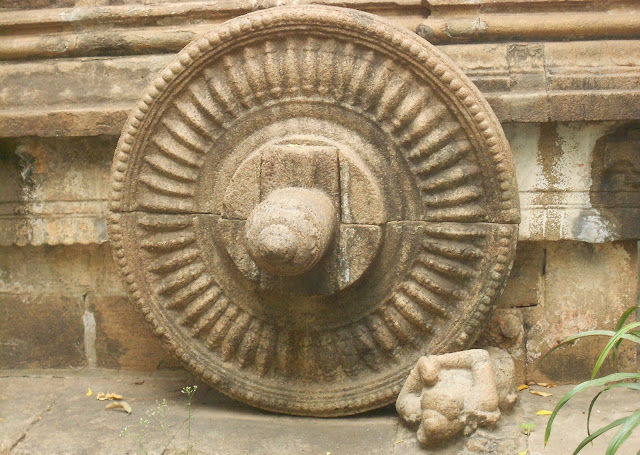Thyagaraja Temple, Thiruvarur – Sculptures &
Reliefs
Thiruvarur is the only ancient shrine in India that
instantly reveals so many different styles expressed over successive centuries
of stone art and sculpture in India. The countless Chola, Pandya, Pallava,
Hoysala, Maratha, and Nayaka sculptures and paintings make the study of the
evolution of form, line, image and theme in traditional art a possible study
through this one temple complex alone. Mahendra Pallava, the
greatest patron, artist and critic of all the 64 forms of artistic expression
recognized and patronized at the time was conferred the title “Vichitra
Chittan” for his ability.
He patronized the art created in and for this temple and
oversaw the finest expressions of the artistic forms appreciated at the
time. There are sculptures of the 64 karnas (postures) and the
abhinayas (expressions) of Bharathanatyam (the dance of India) depicted in the
finest detail on the Gopurams and the Mandapams. Narasimha Pallava, the
son of Mahendra Pallava, was a famous warrior king and like his father, a great
and knowledgeable patron of the arts. His campaign against the
Chalukya King Pulikesi II in revenge for the latter's invasion of the Pallava
country during his father's reign is a well-established historical event.
Paranjothi, his Commander-in-Chief who led the campaign
and ultimately destroyed the capital Vataapi in a single night's encounter, was
a devout Shaivite who desired nothing more than to retire in the service of
Shiva. Inscriptions reveal that Paranjothi deinstalled and
brought back a popular and much venerated image of Vinayaka, Ganesh that was
revered and held in great esteem by the people of Vataapi. There are
two theories as to where he installed this Vinayaka, this trophy of war commemorating
a landslide victory against the Chalukyas.
One theory goes that he installed the "Vatapi
Vinayaka" in Thiruchenkattukudi, his birth place. The other theory is that
he installed it in Thiruvarur. Subsequent investigations have
conclusively proved that Kulothunga Chola installed the idol at
Thiruchenkattukudi and the one in Thiruvarur is the original “Vatapi
Ganapathi”. Several centuries later, Muthuswami Dikshitar created
his famous song "Vatapi Ganapathim Bhaje" in Hamsadwani Raaga before
this diety.
The presence of rare, ancient musical instruments, inscriptions copper plate inscriptions, artistic bronze and
stone sculptures, the dated historical antiquity of the temple car, and the
unbroken tradition and power of the temple as a sacred and historical site
makes the Thyagarajaswami temple at Thiruvarur probably the largest repository
of Tamil cultural values and traditions.
A very endearing sculptural marvel here is in the
sanctum sanctorum itself. A woman stands beside Ambal and she’s essentially the
friend of Ambal and she carries Lord Muruga aka Lord Subramaniyar on her hip.
Lord Ambal’s left hand is on Muruga’s head. The whole scene is so endearing and
loving. And this scene is depicted both as the Moolavar (Stone Sculpture) and Utsavar
(Bronze Sculpture). Such a depiction is seen nowhere else. The sculptures &
relieves on the pillars are beyond words. They are so intricate and fabulous.






